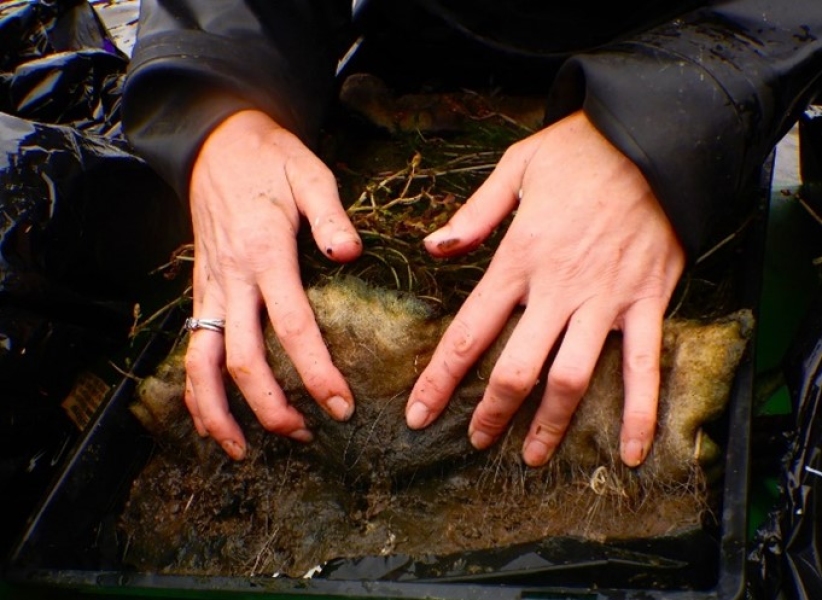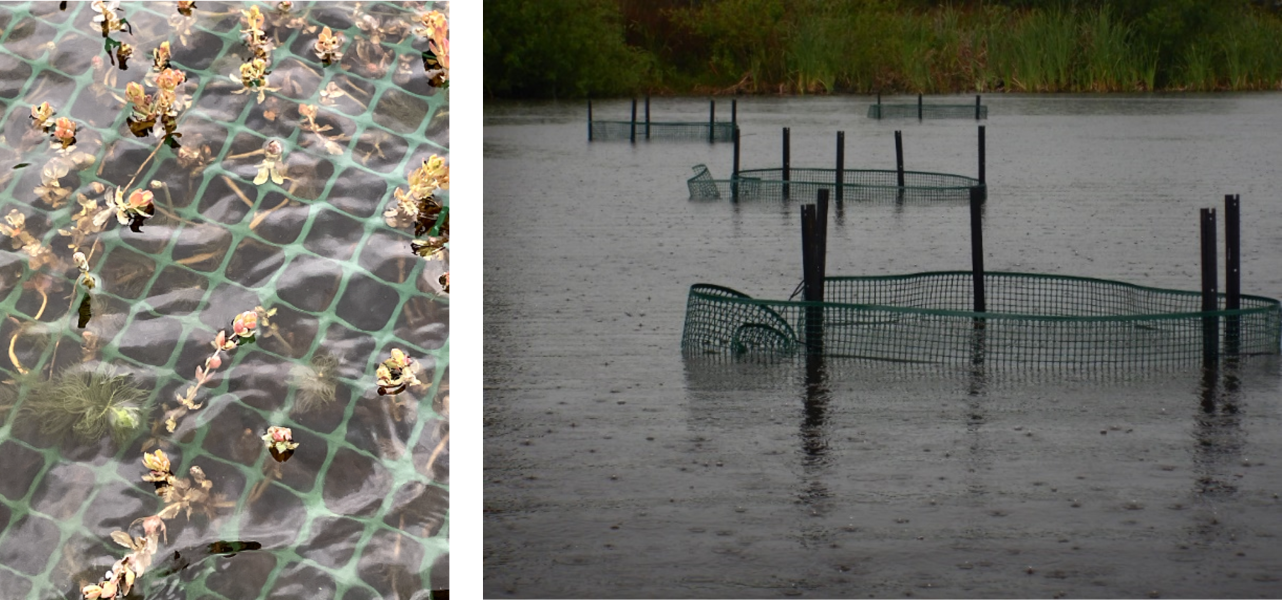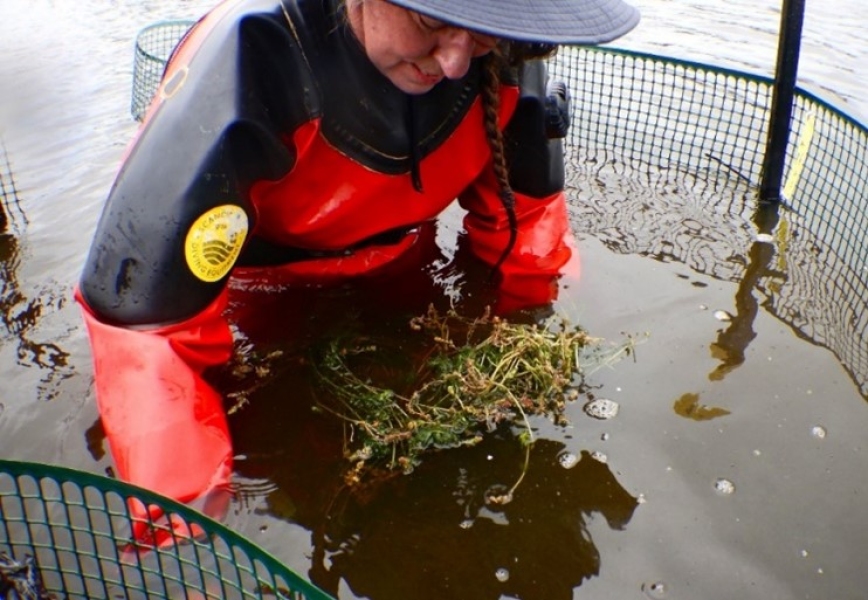A team of NIWA freshwater ecologists are researching the use of biodegradable plant mats to help reintroduce native aquatic plants to degraded freshwater lakes in Aotearoa, New Zealand.
Many of Aotearoa’s shallow lakes are in poor condition, with permanently turbid water meaning aquatic plants no longer have sufficient light to grow. Without the plants, wave action resuspends lake-bed sediments, and a feedback loop is created that traps the lake in the degraded state, with poor water quality.
The plant mats are referred to as ‘rototurf’ by the scientists meaning turf for lakes. The project is a Smart Idea funded by the Ministry of Business, Innovation and Employment (MBIE).
“Action is required on multiple fronts to reverse this process including catchment management to reduce sediment and nutrient from flowing into lakes; and the removal of bottom-feeding pest fish to allow native fish and vegetation to return.”
“However, one of the issues is when native aquatic plants have been lost from a lake for a long time, the seedbank may not be healthy enough for plants to easily re-establish even when these actions are taken. That’s where our research with mats acting as life rafts can help.”
- Project Lead, Deborah Hofstra, NIWA Principal Scientist - Freshwater Ecology Aquatic Plants
What does the research involve?
The research looks at whether biodegradable mats could be used to grow a range of native plants including milfoil, pondweed, charophyte, and isoetes as well as propagule types (shoots, seeds, oospores), and then be installed in lakes, to accelerate plant re-establishment.
Different types of matting have been trialled including products made from hessian, coconut fibre, muka (flax), and wool, and using different plant densities. Based on the trial results, a milfoil (Myriophyllum triphyllum) and a pondweed (Potamogeton ochreatus) were then cultivated in the lab on matting made from two different products for several months. One made from wool, and one muka fibre (flax) matting in preparation for a field study.
“Both products had been assessed as having good longevity in earlier tests, so we could be sure that they would remain intact during the months of cultivation, breaking down once the plants were transferred for the lake trial,” Hofstra said.
What did the field trial involve?
Working with mana whenua, a field trial was established in the first week of December 2023 at Lake Ohinewai, in the Waikato. At this time both species had formed dense mats, and the milfoil was starting to flower.
The team laid the mats in shallow water surrounded by protective cages, to prevent browsing and disturbance from pest fish or waterfowl.
Monitoring equipment was deployed alongside the mats, to measure environmental conditions such as light (photosynthetically active radiation), temperature, dissolved oxygen, chlorophyll a, conductivity, and turbidity.
Team members have since returned to the lake at six weekly intervals to check on plant progress over the summer.
In late January, the NIWA team were joined for the first plant monitoring by visiting scientist, Dr Lyn Gettys (University of Florida) who has undertaken similar research in the USA.
Dr Gettys shared her research with the team in a seminar and showed how she has used a similar process, with native plants in the US. She has returned to the US but will continue to work with NIWA in developing restoration guidance from this project.
The team returned to the lake for a second monitoring session in late February, checking on the monitoring equipment and the plants.
“During both visits, the water clarity was very poor (low light) which is usual for this lake but makes it very difficult to see submerged (underwater) plants,” Hofstra said.
“But the native plant, Myriophyllum triphyllum, was at the surface of the water, in some of our shallow water cages, and in all of the raft cages so it is encouraging that the plants are surviving even in difficult conditions.”
What are next steps with the project?
The NIWA team will continue monitoring every six weeks. Both this field study and the experimental studies they have been doing in the laboratory at Ruakura will continue so they can keep investigating plant growth rates and performance, and the results will be used to develop guidance for the restoration of submerged aquatic plants.
For more information on this project, contact Deborah Hofstra: [email protected]




